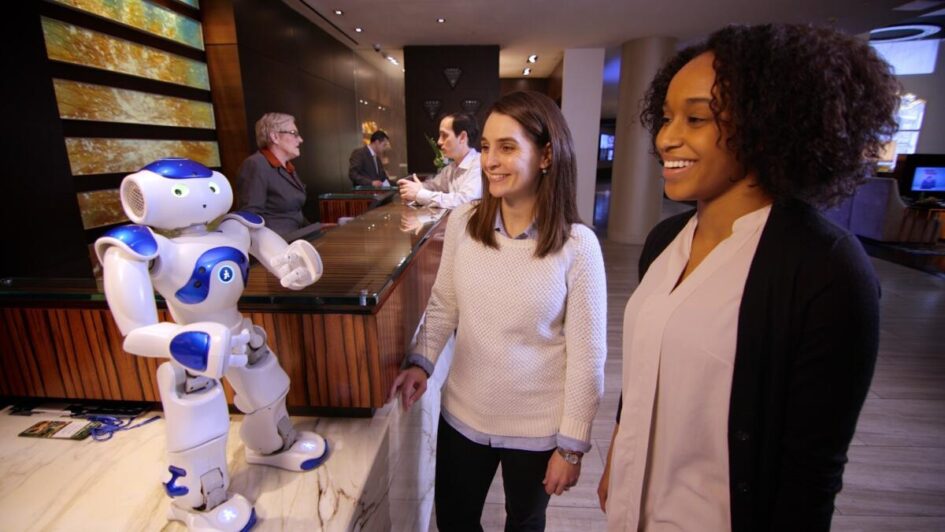With the development of Artificial Intelligence (AI), the growing number of industries has been affected by this tendency and thereby being promoted to make a change. Hospitality Industry, in particular, its customer experience and operation model have been influenced by AI. However, any technological innovation is not only a tool update, but also involves profound changes in customer satisfaction and work performance within an organisation. In the AI-driven strategic transformation, how enterprises coordinate the relationship between ‘culture, structure and system’ becomes the key to determining the success or failure of the transformation.
Case Study: Concierge Connie in Hilton
Hilton is one of the first hotel corporations to experiment with service automation by Artificial Intelligence to improve the customer experience and service delivery efficiency. As part of this strategy, Hilton introduced “Connie,” a service robot that serves as the concierge in 2016. The hotel believed that replacing human receptionists with robots would better manage “key touch points” and reduce service providers’ mistakes, thereby improving customer satisfaction.
However, the results of this strategic change have been disappointing: instead of improving the customer experience, the AI-driven service has led to a drop in turnover. Many customers felt that the robotic front desk reception service lacked a human temperature, believing that the AI could create a barrier between the robotic service and the customer, making the interaction lacking hospitality. It was unable to provide the warm, empathetic and personalised interactions compared to traditional human services.
From the case of Hilton’s introduction of AI service robot, even though the initial purpose was to improve customer experience and service efficiency surfacially, but the final results did not meet expectations. The meet ‘Connie’ lacked emotional communication and customerised service, thereby making customers feel that the service was ‘cold’, which lead to customer attrition and a blurred brand image.
However, the deeper problem is not only the limitation of the technology itself, but also the failure of the organisation to properly deal with the tension between technology-driven and organisational culture in the process of strategic change. When the organisational culture has been lied in the milk of human kindness and enthusiasm as the core value of service, the practice of directly replacing workforce rather than compensate services has created a deviation from the basic expectations of customers for hotel services. This raises a key question: in the pursuit of efficiency and innovation, have companies lost sight of the essence of brand culture and emotional connection with customers?
Future Recommendations
On the one hand, the service-related industry could introduce model of Human-AI Collaboration. Building the strategic parternship between AI and human resource. While human employees excel at complex issues such as emotional communication and on-the-spot judgement, AI is capable of standardised execution and round-the-clock operations. The combination of these two forces, may not only does it improve operational efficiency, but it also retains the warmth and personalised character of the service
On the other hand, establishing the systematic evaluation of customer experience. Introducing new technologies, such as artificial intelligence, that are evaluated solely on the basis of efficiency and cost-saving may result in a lack of the customer experience’s apprasial. Therefore, the organisations could collect data from social media, such as interactive ratings, to improve their service processes. Such approach may help managers understand the emotional needed in the customer’s experience journey, and help organisations determine the allocation of staff and Al in the whole service processes.
Conclusion
To sum up, the case of Hilton’s failure shows that the customer-oriented service industry cannot blindly follow technological trends and ignore the emotional needs of customers. In a people-centred service culture, technology can be used as a complementary force rather than a complete substitute for employees.



Leave a Reply